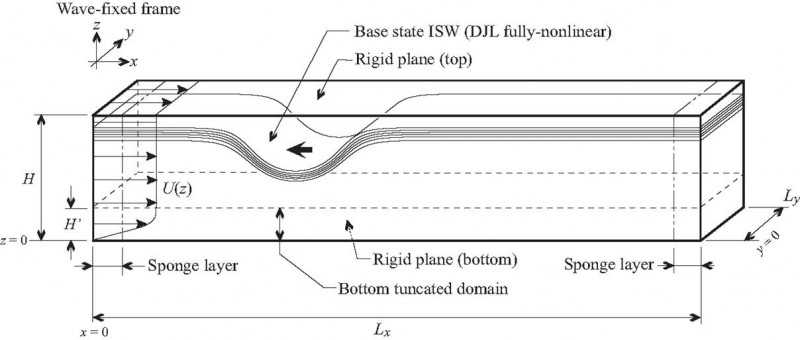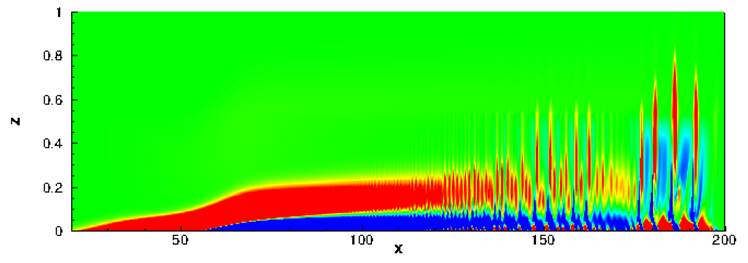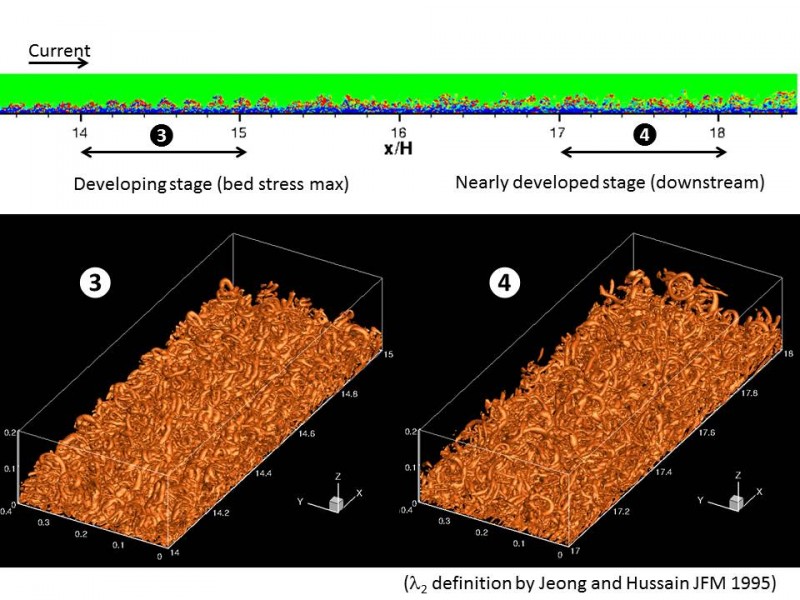Internal solitary waves (ISWs) are long, high-amplitude, waves propagating along the interfacial layer of the lakes and coastal ocean known as a pycnocline (or thermocline). ISWs are strongly non-linear and non-hydrostatic, and maybe thought of as a type of internal tsunami. They impose a pressure gradient on the ocean/lake bottom that is variable in the along-wave-direction and adverse (increasing pressure) in the rear end of the wave. Consequently, boundary layer separation (and possible reattachment) occurs along the bed in the rear of the wave. The resulting streamline configuration is highly prone to a particular form of shear instability, known as a global instability ; its properties are defined by the along-bed variation of the wave-induced current. This instability gives rise to near-bed vortex shedding in analogy to the vortices shed by separating flow over an airfoil. In previous work, we have extensively characterized this instability under mode-1 waves of depression (the pycnocline is above mid-depth and the wave pushes it downward). In collaboration with Profs. Leon Boegman (Queens U., Canada) and Kevin Lamb (U. Waterloo, Canada) we have also proposed a stability boundary for such waves in terms of quantities that are directly measurable in the field.
Current work is focused on direct numerical simulation of the 3-D turbulent boundary layer under an ISW. This is a non-trivial effort on account of the very large number of grid-points (250 million) entailed by the very long domain encompassing the entire wave and also the significant challenges involved in establishing a numerically simulated self-sustained near-bed turbulent wake in the ISW footprint. Dr. Takahiro Sakai, a recently-departed postdoc, continues to work on this problem. Mr. Gustavo Rivera is the PhD student actively involved in this research. Our work is in close collaboration with Prof. Gustaaf Jabos at San Diego State University. We plan to use his custom-designed Lagrangian particle tracking techniques to obtain a better understanding of near-bed turbulence-driven resuspension and the formation of benthic nepheloid layers.


